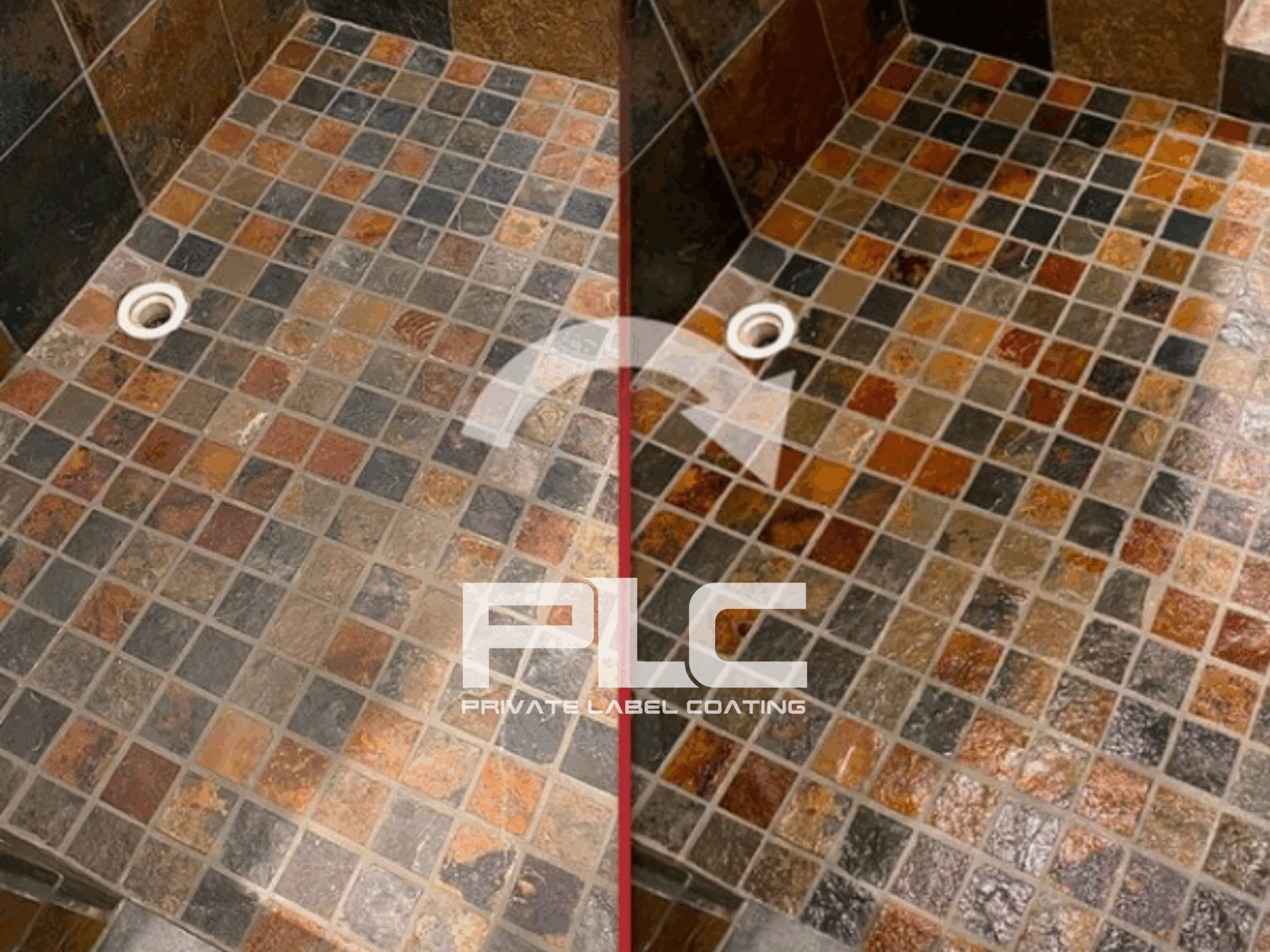Slate tile is a beautiful, durable choice for bathroom surfaces—but like many natural stones, it’s also porous. That means it can absorb moisture if left unsealed, leading to a host of issues like mildew, mold, staining, and gradual breakdown. At Private Label Coating, we’re currently sealing slate tile in 12 bathrooms for a commercial client, and it’s a perfect example of why proper sealing is so important—especially in high-use, high-moisture environments.
The Problem with Unsealed Slate in Wet Areas
Natural slate contains tiny pores that easily absorb water, soap residue, and grime. In a space like a bathroom—where humidity and water exposure are constant—this can lead to:
- Mildew and mold growth
- Unsightly staining and discoloration
- Efflorescence, the chalky white residue from mineral buildup
- Flaking or surface erosion of the stone over time
- Musty odors from moisture trapped beneath the surface
Without a proper sealer, even the most beautiful slate can become stained, discolored, or structurally compromised.
The Benefits of Sealing Slate Tile
Sealing slate acts as a barrier against water, grime, and microorganisms—all while enhancing the stone’s natural beauty. Key benefits include:
- Prevents mildew, mold, and bacterial growth
- Protects against stains from water, soap, and everyday use
- Simplifies cleaning—sealed tile is easier to wipe down and maintain
- Preserves color and texture, with options for natural or enhanced finishes
- Extends the life of both the tile and grout
We use a high-performance antimicrobial sealer that’s specifically formulated for wet environments like bathrooms, spas, and showers. It not only repels water and grime, but also inhibits the growth of bacteria and mold—making it ideal for environments with constant moisture exposure.
Our Sealing Process
At Private Label Coating, we follow a professional process for maximum protection and lasting results:
- Preparation: We deep-clean the tile and grout, removing buildup, residue, and early signs of mildew.
- Dry Time: Surfaces are thoroughly dried to ensure optimal sealer bonding.
- Application: We apply a premium penetrating sealer that creates a breathable, water-repellent barrier and delivers antimicrobial protection.
- Curing: The sealer is allowed to cure fully, typically within 24 hours, before the space is put back into use.
For clients seeking a bold, rich look, we also offer enhancing sealers that deepen the color and bring out the natural texture of slate.
Residential vs. Commercial Sealing
The frequency of resealing depends on how much wear and moisture the surface is exposed to. In commercial or industrial bathrooms, where traffic and moisture are constant, we recommend resealing every 1–2 years.
In residential bathrooms, where slate experiences less exposure, a quality seal can last several years before needing to be reapplied.
Tip: To check if it’s time to reseal, simply splash water on the tile. If it soaks in instead of beading up, it’s time for a refresh.
Maintenance Tips for Sealed Slate
To help your sealed slate last:
- Use pH-neutral cleaners made for natural stone
- Avoid vinegar, bleach, or abrasive cleaners
- Wipe down wet areas regularly to reduce water buildup
- Stick to a resealing schedule based on usage
Final Thoughts
Sealing slate tile isn’t just about looks—it’s about protecting your space from moisture damage and harmful growth. Our antimicrobial sealer is built for high-moisture environments, giving your tile the defense it needs to stay clean, beautiful, and long-lasting.
Need your slate tile sealed or resealed? Contact Private Label Coating today to get a free quote or schedule a site visit. We’re here to help protect your surfaces—starting with what matters most.

